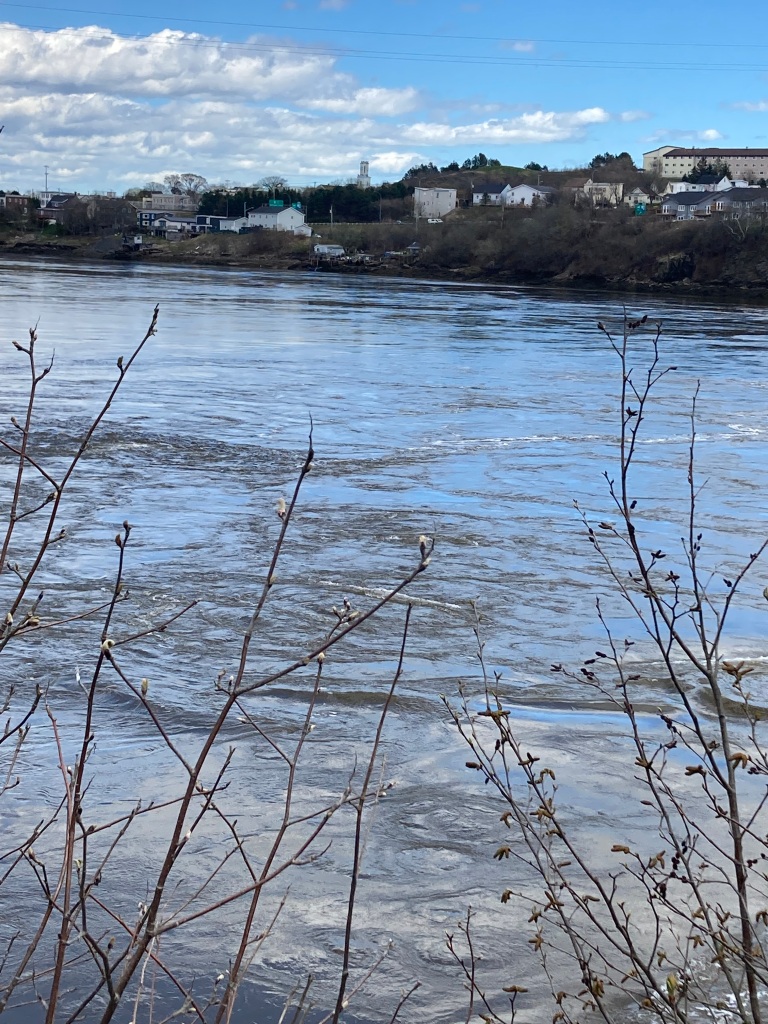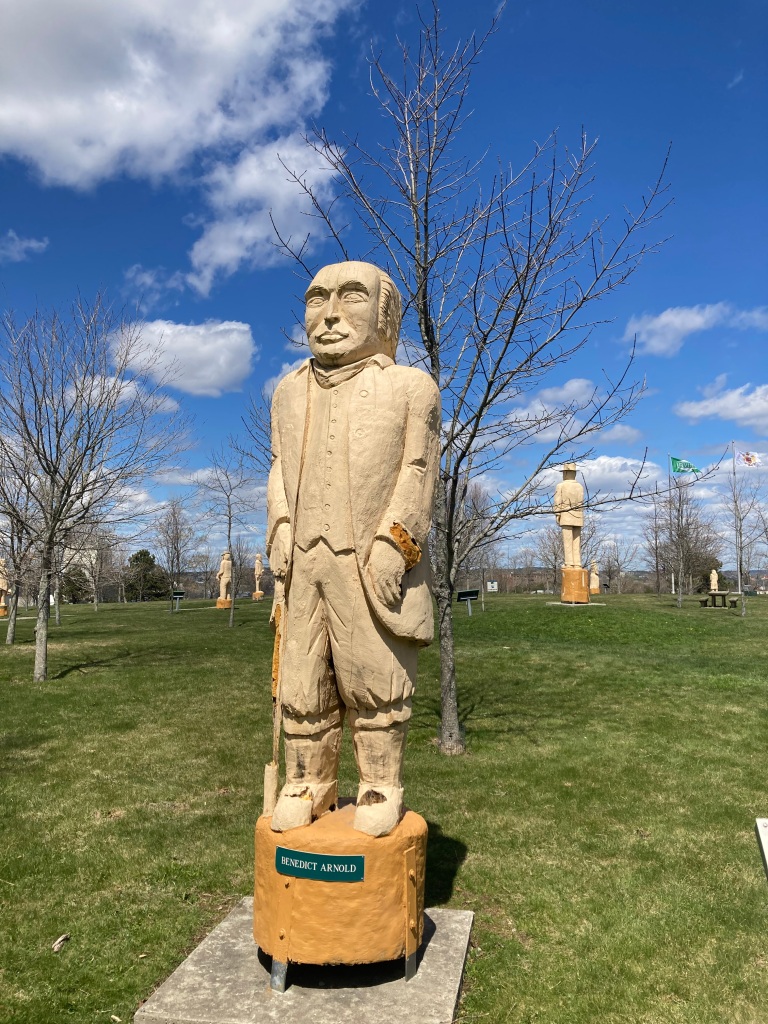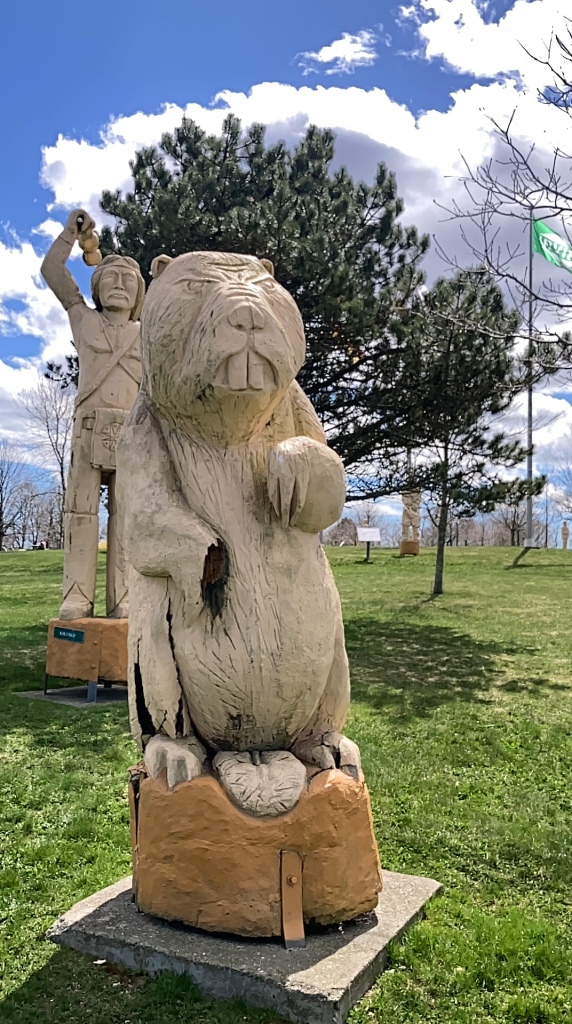May 7, 2024, Shediac- The swirling waters reminded me of pictures, both painted and photographic, that I’ve seen of Skaggerak and Kattegat, between the North and Baltic Seas. The currents near the confluence of the Bay of Fundy and Saint John River are nowhere near as intense as the Scandinavian maelstroms, but they do appear, for all the world, like reversing waterfalls. The phenomenon here is the result of the interaction between the Bay and the River, and as you might guess, is most intense at high tide.
I stopped here, on the west side of Saint John, to take in this phenomenon which, along with Moncton’s Magnetic Hill, is one of New Brunswick’s signature geographic anomalies. Here are a few shots of the festivities, from both the base of the hill and from the window of the concessionaire’s dining room, which had just closed for the day.

Reversing Falls, Saint John, NB, from Wolastoq Park

Reversing Falls, from base of hill.

Reversing Falls, from concessionaire’s restaurant
Wolastoq Park, on the hill above the Falls, commemorates key figures in New Brunswick history, by means of tall wooden carved likenesses. Here are three such statues. First is Benedict Arnold, the skilled,discounted hero of Ticonderoga who became synonymous with treason in the emerging United States. He ended up being cast out of Canada, as well, ending his days in London.

Next is the more well-regarded Sir John Robertson, a philanthropist of the mid-Nineteenth Century, who fought for the well-being of the common person.

Then, there was Francoise-Marie Jacquelin, who fought far more powerful men to defend her husband’s economic bastion: Fort La Tour. Though she lost the fight, in the end, Francoise stands as a clarion caller to women and girls who seek to make their rightful mark in the world.


Finally, there is a depiction of the legend of Koluscap, the First Man of the Maliseet, as well as of my Penobscot ancestors, putting a selfish Beaver in his place, after Beaver’s dam deprived the Maliseet people of the water they needed to survive. Beaver lost his giant size, the story goes and is forever consigned to be a small animal.
Saint John was, thankfully, not at rush hour, so I headed east to the town where my Nana’s paternal forebears first arrived on North American soil. Shediac was a place of refuge for my great-great-great grandfathers, who had come here from Quebec, in the mid-Eighteenth Century, following the attempt by the English to deport French-speaking residents of that colony, after the fall of Montreal and of Quebec-Ville. So, as with Rouen and Montreal, I feel at home here.
